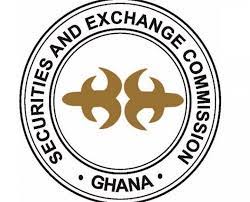- ….managing the dysfunctional behaviour of teams and organizations
It is in the interest of all business leaders to ensure they create a team environment in which staff can thrive, resulting in better staff performance, efficiency and decision-making. The concept of dysfunctional organisational behaviour is not a contemporary phenomenon but has been the concern for most senior management teams and organisations due to its far-reaching consequences and impacts on organisational performance.
The Enron collapse is perhaps the most cited and easily recognisable example in terms of organisational failure as a result of dysfunctional behaviour. In the case of Enron, both agency issues and unethical business practices were linked to collapse of the company. In reality, the dysfunctional behaviour concerns of teams and organisations is the recipe for entertaining and setting bad culture practices leading to poor performance and other bedevilling implications on the organisation.
However, understanding the behaviour of people at work is fundamental to the effective management of an organisation. Obviously, a number of factors come together to determine this behaviour and its organisational consequences. Dysfunctional behaviour can usually be found in teams and organisations that allow lack of fairness and lack of transparency which force the employees to feel humiliation and lack of equity.

A major reason leading to dysfunctional behaviour at workplaces can be related to the spread of corruption and favouritism, adding to the absence of code of ethics and management’s failure to respond directly and to take corrective action toward dysfunctional behaviour.
To deal with organisation dysfunctional behaviour in the light of leadership intelligence is to explore the various underlying strategies leadership would undertake to manage their occurrence and deal with its wider ramifications and impacts. Throughout this article, we will explore leadership intelligence and the degree to which dysfunctional organisational behaviour can be managed by leadership to determine success or failure of the organisation.
An organisation of individuals and groups
Organisations are collectives of individuals and groups working to pursue common objectives. Their members come from various backgrounds and have varying abilities and skills, differing motivational levels and different ambitions. Within the organisation context, these people must communicate, make decisions, show leadership and handle power and organisational politics as they carry out their assigned activities. Beside the individual people and group are how tasks and the deployment of technology functions within the organisation, and how these people use them.
The effective organisational design structure and processes, through an effective coordination and control system, equally defines employee behaviour and how this impact facilitates performance. The nature of leadership, communication, decision-making, power and politics also determine the nature and quality of interpersonal and intergroup relationships and coexistence.
Within this group setting are acceptable and unacceptable behaviours. An acceptable behaviour defines the actions, demonstrations and language which are supportive of a positive work atmosphere, promote courteous communication and build teamwork among co-workers. These behaviours may include working well as part of a team or group, a positive attitude toward co-workers, a clean and suitable appearance – taking into account the job one does, respect for others and individual differences.
What is dysfunctional behaviour in organisations?
According to Peterson, 2002, dysfunctional behaviour refers to conducts that violate work codes of ethics and regulations, which can negatively affect work relations and the overall performance inside organisations. Limited transparency into organisational decision-making, complacency and resistance to discuss culture, bad news not shared and employees not feeling comfortable reporting incidents, strong focus on individual results or a get it done at all costs attitude, all contribute to some of these behaviours.
To cite Caruana, Ramease and Ewing on the various factors that contribute to dysfunctional behavior; these are a lack of equity, lack of proper formalisations, inappropriate organisational culture, and lack of proper supervisory behaviour to control the organisation behaviour itself. The glue that holds these building blocks together is the character of management and leadership.
Dysfunctional behaviour at work negatively affects the overall performance, invariably leading to declining productivity, increasing job dissatisfaction, higher turnover and higher levels of work-related stress; which in turn can damage the overall organisational performance.
Significant understanding of the impact from dysfunctional behaviours lies in the fact that dysfunctional behaviours are widely spread in almost all organisations, public and private, with its very destructive manifestations. These behaviours may be classified under thefts, sabotage, sexual harassment, jealousy, envy, revenge and vulgarity – all of which affect employee’s morale, self-esteem and satisfaction level, leading to negative, poor performance and productivity. What must the organisation do?
The role of leaders in managing employee’s dysfunctional behaviour effectively at the workplace through the different strategies and control measures is critical. Though organisational change of any kind is hard – and without strong leadership transformation remains difficult and can leave business and their leaders wandering aimlessly for years, it is highly imperative for leaders to address these cancerous attitudes of the people to excite the organisation’s goals and expectations.
The character of a bad Organisation:
Several signs give credence to the important conclusion that the character bad companies and organisations show can be blamed for its devastating effects on the organisation. Anytime employees are not given the opportunity to interact freely with their manager, have unclear job responsibilities, are disrespectful and unprofessional, have bad reputations; there’s a pattern of people leaving the organisation or department; people are talking behind each other’s back – watch out, it’s a bad organisation.
No large companies are built on the efforts of just one individual, however talented and hardworking. It is the strategic pooling of human resources – time, talent, interest and expertise – that heralds the best results. Just as the dysfunctional behaviours drive poor organisational results, these functional behaviours drive the leaders who possess them to operate and navigate their world much more effectively – making them truly influential leaders.
The impact of dysfunctional behaviour on teams and organisations
Studies have shown that organisations’ unresolved dysfunctional behaviours have highly negative impacts on their performance. It is established as well that organisational performance dwindles when employees reduce their efforts at work intentionally, and refuse to do any job not written in their job descriptions. Besides, team-spirit among colleagues disappears as they stop helping one another.
More significantly, it is evident that confusion about goals, disloyalty, high turnover, information withholding, undeserved promotions, inflexibility in procedures, failure to take initiatives contribute significantly to the suffering of many organisations.
A model of organisational Behavior and Management
A major responsibility of managers is to make organisations operate effectively. Bringing about effective performance, however, is not an easy task. Understanding one individual’s behaviour is challenging. Understanding a group that’s made up of different individuals and comprehending the many relationships among those individuals is even more complex.
Despite this difficulty, however, the organisation and the people must be managed. According to Nadler and Tushman, the work of all organisations gets done through people, individually or collectively; on their own or in collaboration with technology. Therefore, the management of organisational behaviour is central to the management task. A task that involves a capacity to understand the behaviour patterns of individuals, groups and organisations to predict what behaviour responses will be elicited by various managerial actions and predictions made to achieve control is critical.
Managing Dysfunctional Behaviour
What causes one leader to hire ‘yes’ people and another leader to hire people smarter than themself? What causes one leader to see disagreement as a threat and another leader to see disagreement as an opportunity to learn? What causes one leader to see risk as something to avoid and the other as a necessity for achieving great accomplishments? What causes one leader to see underperforming employees as problems to get rid of, and another leader to see underperforming employees as people to learn from to improve their organisational culture?
The context for managing employees’ dysfunctional behaviour places a huge onus on leaders to deliberately develop employees’ awareness and skills, effective performance HRD practices, structures and delivery mechanisms; ensure development of an ethical governance culture and climate; and establish more far-reaching means than those of organisational governance and agency mediation to minimise the possibility of dysfunctional behaviour.
Effective and strong leadership is in evidence when a leader steps up, makes a hard decision and then stands her ground for as long as it takes to see the change through. As working adults are positioned in many different roles with many different responsibilities, there are likely going to be conflicting issues and frictions pertaining to how job functions are supposed to be conducted.
Since the classical dysfunctional behaviour patterns are usually symptomatic of the absence of trust, fear of conflict, lack of commitment, avoidance of accountability and inattention to results; the triggers that cause such breakdowns are tied to humans’ natural emotional response to threats, and must be addressed by leadership.
However, leaders must stay focused: rise above and stay focused on the job and the performance. They must keep their cool while remaining dynamic in their roles as team leaders, being supportive, open and collaborative to ensure team or organisational success.
Leadership Mindsets:
Mindsets are the mental lenses that shape how leaders see and interpret the world around them. Dysfunctional leaders’ mindsets attune them to mishandling situations and making decisions which simultaneously lead them to believe they have taken the best course of action. The difference between effective and dysfunctional leaders is rooted in how effective leaders see and interpret their worlds, which is founded in their mindset. To touch on mindsets is to advocate that leaders remain open, and nurture the attitude of growth and promotional mindsets.

In summary, it must be emphasised that it does not make sense to hire smart people and then tell them what to do in whatever form. Smart people are employed to shape and change the culture of teams and organisations of which they are members.
Discovery….Thinking solutions, shaping visions.
Frank is the CEO and Strategic Partner of AQUABEV Investment and Discovery Consulting Group. He is an Executive Director and the Lead Coach in Leadership Development and best Business Management practices for Discovery Leadership Masterclass
Pearl is the Lead Consultant on Cx. Leadership & SME, Country Chair-Ladies in Business










